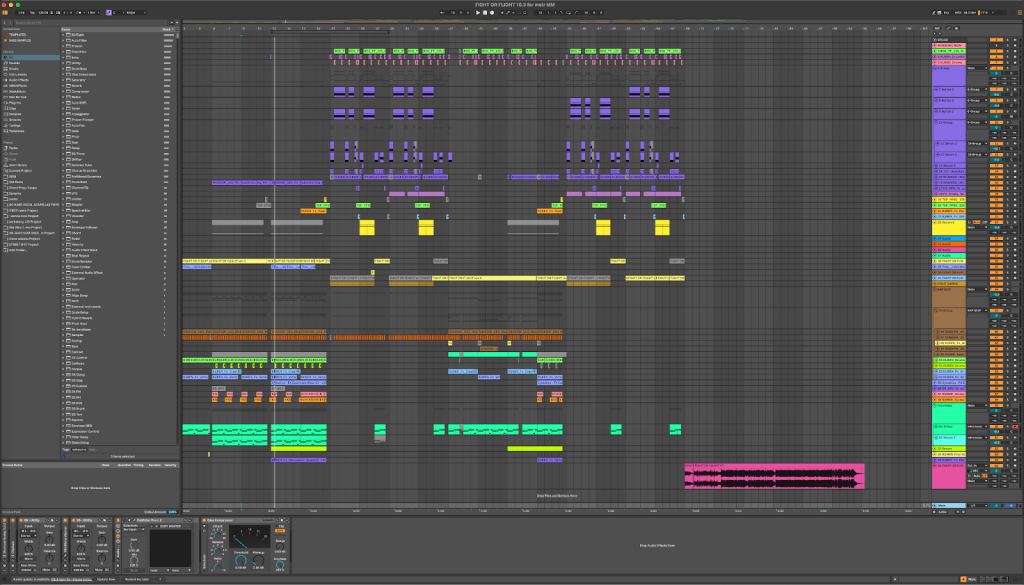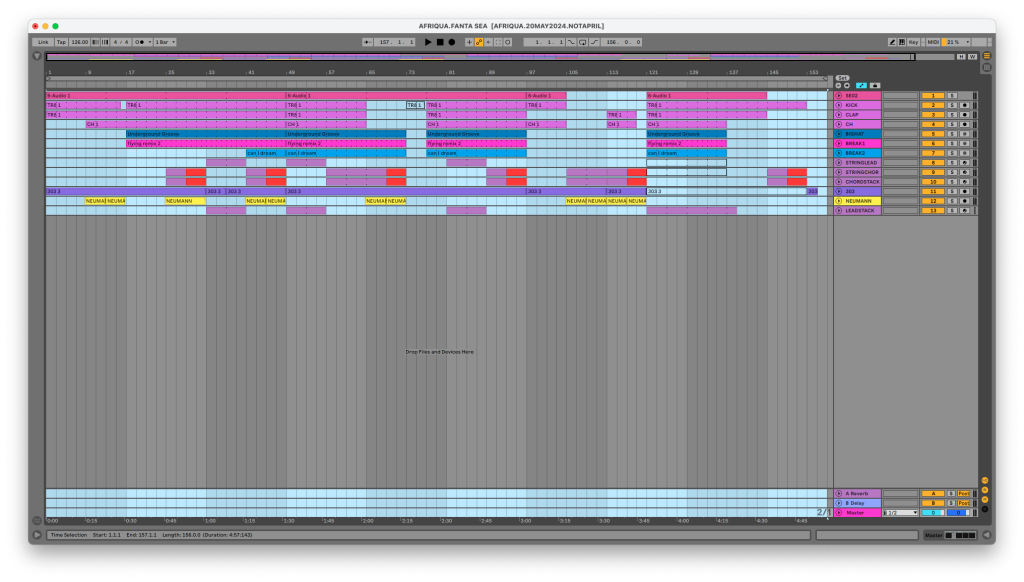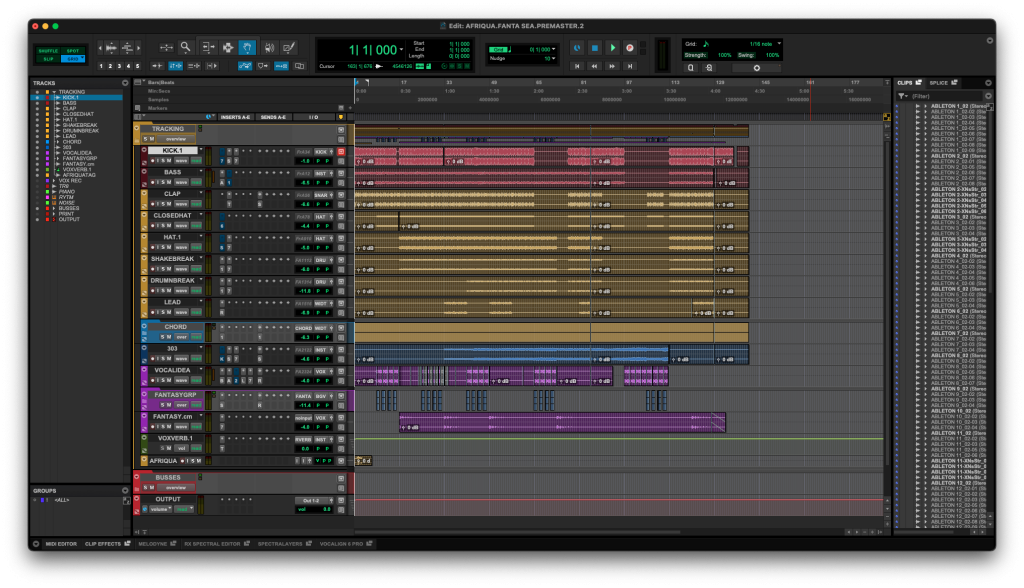Above Image Cred: ©youcancallmeo
Afriqua’s FANTA SEA arrives on Love On Cropsey as the label’s third release, carrying the Berlin-based artist’s signature mix of musicality and club-focused energy. Officially out as of August 15, the single channels rolling percussion, layered melodies, and a sense of escapism that feels equally suited to headphones and the late-night floor. The release also features a remix from Butch, who reshapes the track into a kinetic, acid-leaning rework built for peak-time sets.
For Afriqua, the record is another step in a career defined by refusing to stay boxed into a single lane. A classically trained musician and seasoned DJ, he has consistently blended hip-hop instincts, house traditions, and experimental edges into something unpredictable yet refined. From his R&S debut to self-released projects, his output has moved fluidly across genres while maintaining focus on groove and feel. FANTA SEA extends that vision into a more expansive and dreamlike territory while still rooted in rhythm.
In this feature, Afriqua unpacks the tools and mindset that shaped FANTA SEA and acts as a glimpse into how one of today’s most fluid producers balances precision with spontaneity to craft music that feels alive.
Roland SE-02

I think about producing club records cinematically. The way Tarantino makes references to old movies I try to embody different eras of dance music on different songs. I don’t just want to rip it off and throw a modern kick underneath, I wanna fully understand and embody a different time of music-making. When you’re trying to capture the essence of something, in this case early 90s acid house, you have to think like those producers did – they were working with purely analog gear and sampling vinyl out of necessity. The SE02’s initial preset was my starting and ending point. The work isn’t in tweaking knobs or building some complex patch; it’s just about hearing a bassline and playing it with the right pocket.
Only thing I touched on the SE02 was some Aphex Aural Exciter in Pro Tools – just enough high-end shine to make it pop. Everything else stayed direct: synth straight to the interface, no compression, no EQ, just a good take. I’m focused on the ingredients being so high quality that the recipe can be simple. The bassline holds down the whole foundation, so it needed to feel intentional and locked in from the jump. That comes from performance, not from processing.
I love simple shit like the SE02 because it forces you to focus on the fundamentals – melody, rhythm, and feel. Preset hunting or sound design rabbit holes are normally a sign you don’t have a good idea yet.
Suno AI
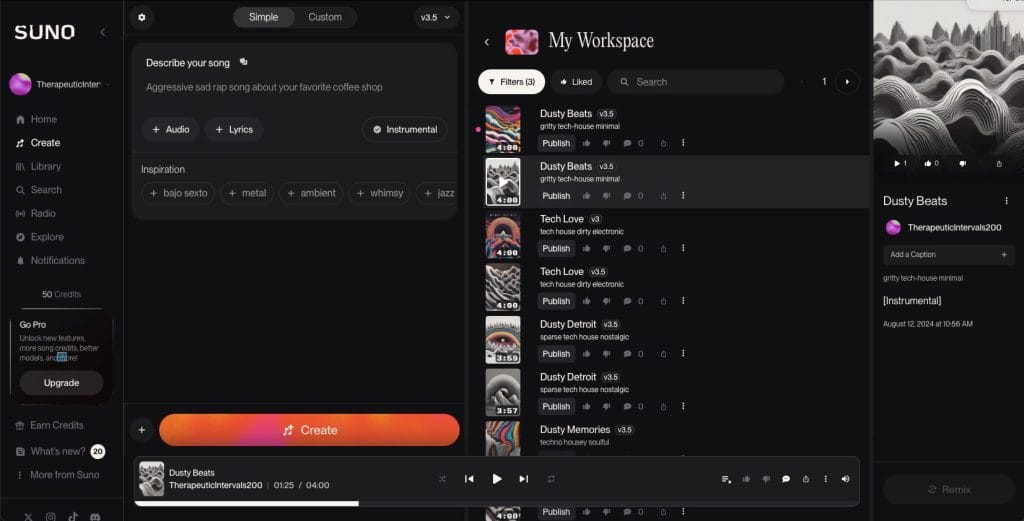
Suno AI is basically the ultimate crate-digging experience. You can prompt it to generate music in any style, from any era, with whatever characteristics you want. Instead of spending hours digging hoping to find that perfect break or texture, you can describe exactly what you’re looking for and iterate. And if you’re inspired by it, you can use it like you would any record from the past. It’s not replacing the art of sampling. It’s the next level of it. For someone who lives for that moment when you find the perfect piece of source material, Suno feels like having access to an infinite record collection where every album is exactly what you need. Anything that lets you be more precise about chasing down the sounds in your head is good.
For the main hat in “FANTA SEA,” I hit Suno with some wild shit: “unintentionally minimal acid house record from an unknown Chicago legend who died without knowing he inspired a movement in London warehouses. Pressed on a dusty white label from the back of the record bin.” The AI delivered exactly what I was hearing – something that felt like a lost piece of history rather than a modern recreation. I approach prompting like I’m describing a mythical record to someone who can actually manifest it, getting deep into the backstory, not just “make a hat sound.” People love to hate on AI, but crafting prompts like that takes way more creativity than scrolling through top loops on Splice.
If you’re gonna use AI for sampling, treat the prompting like a creative skill in itself. Don’t just ask for “90s house drums,” tell it a whole story about the track you want it to create. The more specific and imaginative you get with the narrative, the more unique and usable the results become. Think of it as the evolution of crate digging: instead of being limited to what actually exists, you can manifest the records that should have existed but never got made.
Any Plug-In That’s Off
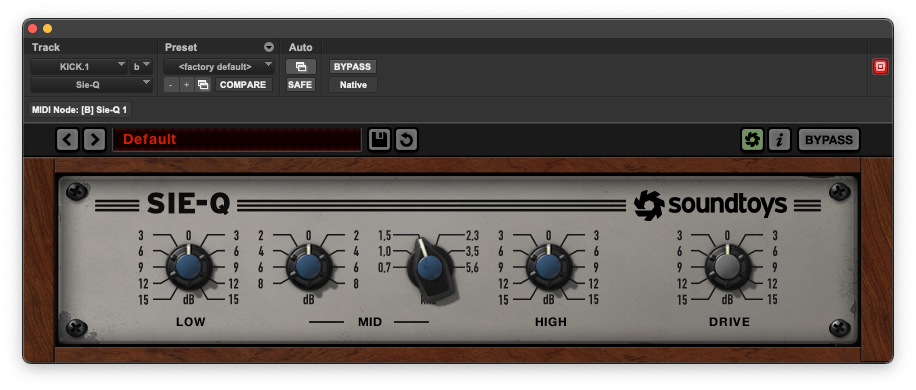
Sometimes the most powerful plugin in your session is the one that’s loaded but doing absolutely nothing – the EQ with a flat curve, the compressor that’s bypassed, the effect that’s sitting there ready but not needed. These inactive plugins represent something deeper than just having tools available; they represent the confidence to know when NOT to use something, even when it’s right there.
On “FANTA SEA,” I’ve got a Sie-Q on the kick that’s completely flat – all the levels are at unity. Is it doing anything? Who cares? There’s also a Waves TG12345 on my drum bus that’s muted because this particular record didn’t need it. Having these tools ready but unused isn’t about being indecisive, but having the confidence to let good sounds be good sounds. The real skill is knowing when your mix is working and having the restraint to leave it alone.
Learn to love the bypass button and embrace the power of doing less – it’s often the mark of a producer with a clear vision. If your source material is strong and your arrangement is tight, sometimes the best processing is no processing at all. Let your ears decide what the track actually needs.
MIDI (+ Practice)

MIDI is probably the most underrated tool in any producer’s arsenal. It’s the protocol that electronic music is built on (going on 40 years now) and the resolution with which it can capture and digitize a performance is nothing short of miraculous. But you gotta practice! You can record every nuance of timing, velocity, and expression, but only if you actually put in the work to play with intention. If you use MIDI like it’s an excel spreadsheet, you’re not harnessing its power, and missing the whole point of what makes electronic music feel alive.
For “FANTA SEA” as with most Afriqua tracks, every line was recorded live with no quantization – the bassline, the vocal timing, even the way the breaks are chopped against the 4/4 kick. I use MIDI to capture the human feel and micro-timing that makes beats actually groove instead of just tick like a metronome. The key is treating MIDI recording like you’re cutting a live performance, not like you’re programming a drum machine. When you play with conviction and let MIDI capture those natural timing variations, you get that pocket that no amount of swing or groove maps can replicate.
If you’re serious about electronic music production, learn to respect MIDI as a recording tool, not just a programming one. Record everything live first, and “shade” the take with quantization. The timing imperfections and velocity variations you capture through real performance and attentive editing are what separate your tracks from the gridlock. And you actually get better.
Quick Fire Tips:
Tip #1 Practice.
Tip #2: Ear, not Gear. The magic is in the technique, not the technology. Musical decisions, ear training, and understanding arrangement lets you make simple, effective choices.
Tip #3: Make the records you wish existed. Don’t chase trends, create the music you’d actually be excited to discover.
Tip #4: Great beatmaking is like great instrumental playing. If you do everything well at the source level, you don’t need much processing.
Tip #5 Every plugin sounds amazing when it’s off. Learn to love the bypass button and have the confidence to let good sounds sound good.
The post How It Was Made: Afriqua – FANTA SEA (Love On Cropsey) appeared first on Magnetic Magazine.



